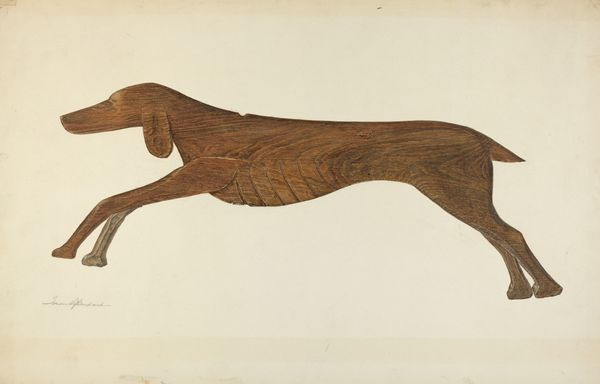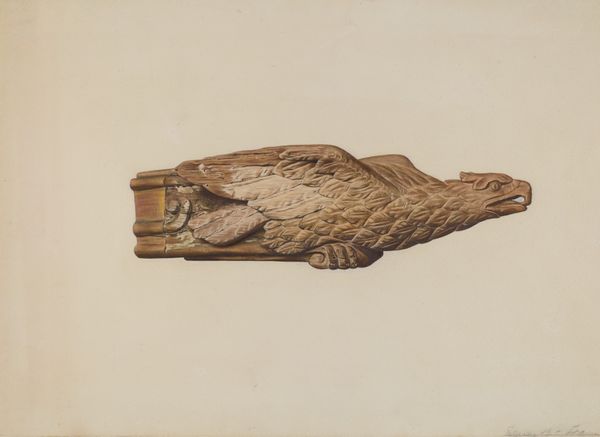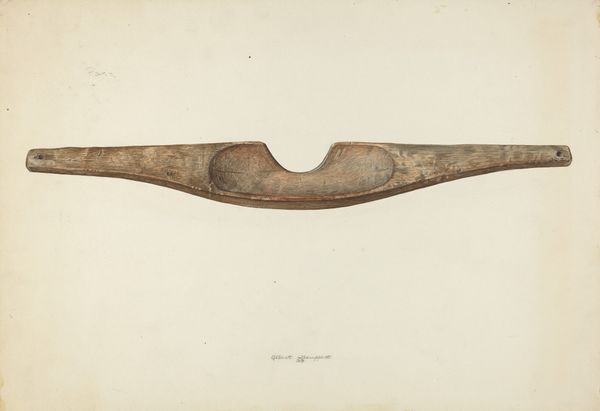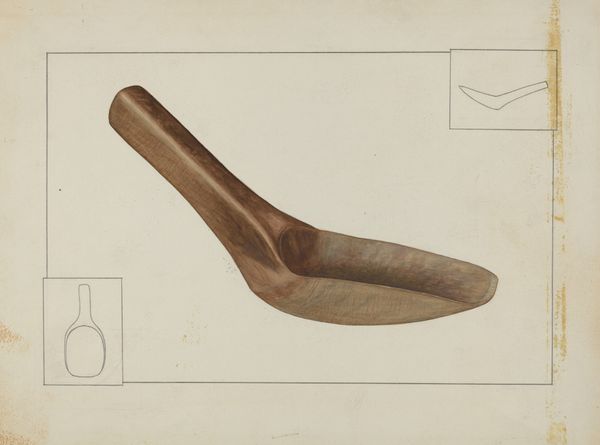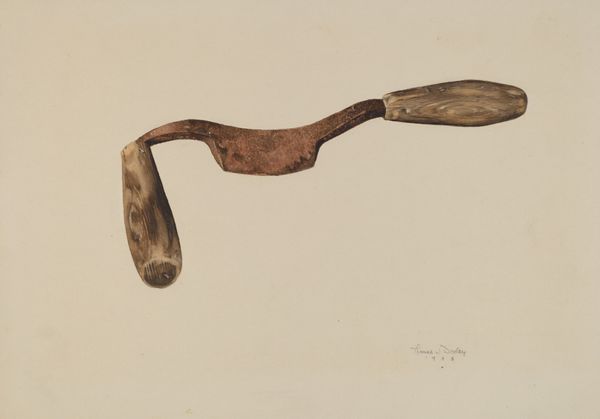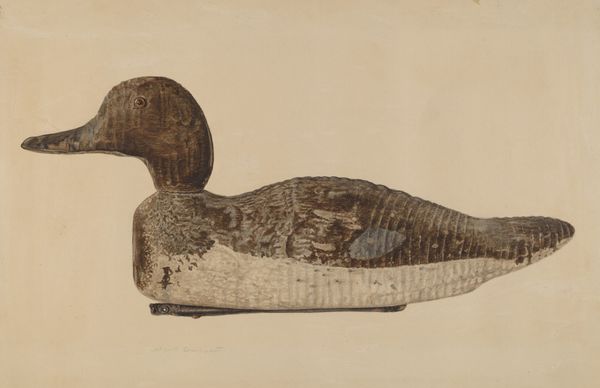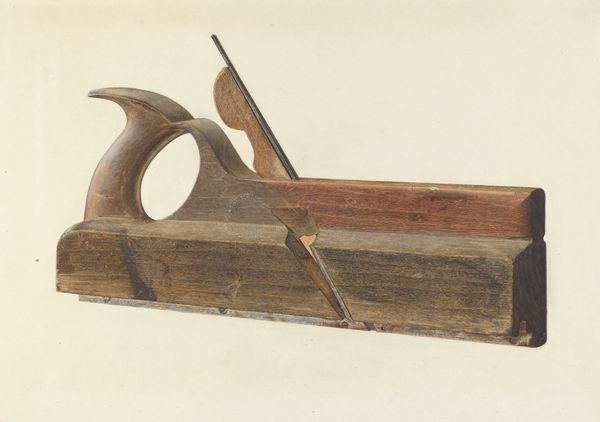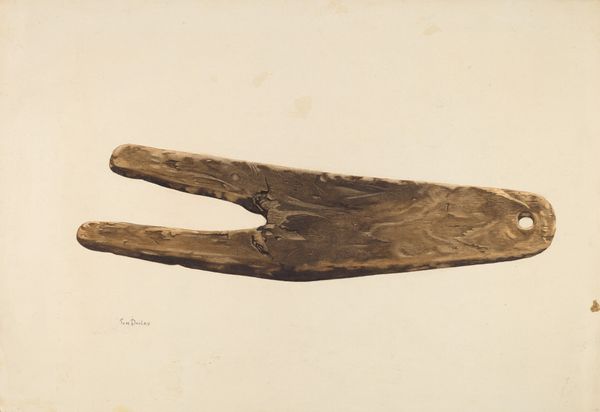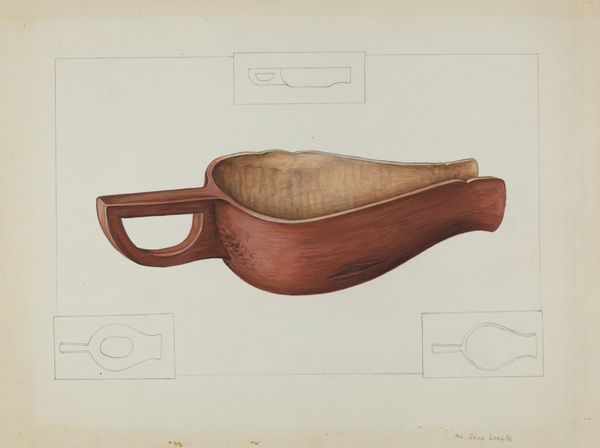
drawing, paper, pencil
#
pencil drawn
#
drawing
#
pencil sketch
#
paper
#
pencil drawing
#
coloured pencil
#
pencil
#
watercolor
Dimensions: overall: 28.6 x 40.8 cm (11 1/4 x 16 1/16 in.) Original IAD Object: 9" long
Copyright: National Gallery of Art: CC0 1.0
Editor: This is Florian Rokita's "Butter Paddle," circa 1938, a drawing on paper. It's surprisingly captivating for a simple kitchen utensil! The textures, especially the wood grain, are very well done. What's your perspective on this seemingly mundane object? Curator: Precisely! Consider the labour embedded here. This isn't just a rendering of wood; it’s an examination of how resources become objects of use. Who made this paddle? Where did the wood come from? What are the social dynamics surrounding butter production and consumption at this time? The pencil and watercolor are mediums, but also a translation of labour and material. Editor: So you're saying the choice to depict something so commonplace is a deliberate commentary? Curator: Absolutely. The artist chooses to elevate a common tool through skilled rendering. Look closely—the handle includes an ornamented pattern. The very act of Rokita creating a watercolor and pencil drawing challenges traditional notions of "high" art by focusing on the material realities of everyday life. This object relates to the work needed for it, its beauty found in utility. How does the 'drawn' material itself, the texture of pencil on paper, factor into that dialogue? Editor: That's a great point. It makes me think about how mass production has changed our relationship to objects, and Rokita may be reflecting that. Now art serves to remind people to think beyond commodities to acknowledge materials, processes, and contexts. Thank you for elaborating! Curator: Indeed! Thinking about art as related to production opens many ways of reflecting on the world around us. It has been great exploring that together!
Comments
No comments
Be the first to comment and join the conversation on the ultimate creative platform.
